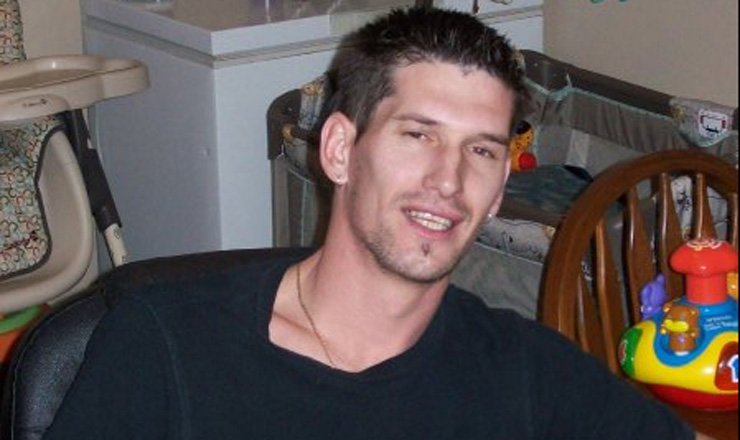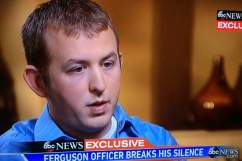
(Facebook)
A 32-year-old Bosnian immigrant named Zemir Begic was beaten to death with hammers on Sunday by a group of St. Louis teens outside his car.
Police insist this was not a hate crime, but local Bosnians have taken to the streets in outrage. All this is happening as nearby Ferguson still reels from the grand jury decision in the Darren Wilson case.
Here’s what you should know about Begic, the gruesome tragedy that took his life, and the fallout in the community:
1. Begic Died Protecting His Newlywed Wife
While heading home from a bar in St. Louis around 1:15 a.m., Begic, his newlywed wife and a friend had their vehicle surrounded by a group a teenagers who began banging on it. When Begic stepped out of his car to confront them, he was yelled at and struck with hammers in his head, abdomen and face, leaving him fatally injured. He died hours later at St. Louis University Hospital. After the assault, the teenagers ran away.
His wife of six months, after witnessing her husband’s death, said, “The last thing he did before he actually died was pull me out of the way and put himself in front of me, basically giving up his life for me.”
The friend in the vehicle, Suad Nuranjkovic, 49, said at least five teens started banging on the car. Nuranjkovic got out, ran and hid in a parking lot across the street during the attack. He said, “I was afraid that if one of them had a gun, they were going to shoot me, so I didn’t know what to do.”
Another Bosnian resident of St. Louis, Seldin Dzananovic, 24, said the teens had approached him about an hour before they attacked Begic, but he was able to fight them off with only minor injuries. He said, “I’m just lucky, God is on my side.”
Begic’s family has set up a GoFundMe page to raise money for funeral expenses.
2. 3 Suspects Are in Custody, Ages 15, 16 & 17
Two of the alleged assailants were caught and taken into juvenile custody, while police began searching for two others, a 16-year-old black male and a 15-year-old Hispanic. One of those suspects, age 17, has turned himself in, while the other two in custody are 15 and 16. Homicide detectives are planning to pursue charges against the suspects, with a fourth suspect still unknown as of now. Despite Dzananovic’s description of at least five teens, police say there are only four suspects.
3. The Killing Sparked Protests Among Bosnians, Who Believe They’re Being Targeted
After Begic’s death, about 50 locals from the Bosnian community briefly blocked Gravois Avenue in St. Louis in protest of his assault and murder. It also resurfaced outrage over another recent Bosnian victim, Haris Gogic, 19, who was shot and killed in 2013 by a robber in his family’s convenience store.
Begic’s sister, Denisa Begic, 23, said, in regards to her brother, “He loved America. We come from Bosnia because we were getting killed and our homes and families were getting destroyed. Never in my life did I think he would get murdered.”
Denisa continued, “He loved everybody. I don’t know what to think of it. It’s so wrong what they did. They didn’t just hurt Zemir’s family. They also hurt their own family because I’m pretty sure their moms will never see them again.”
She says the Bosnians are upset because they believe the suspects targeted her brother because he was Bosnian.
Suad Nuranjkovic, the passenger in Begic’s vehicle, said, “The picture is in my head, what I saw, I don’t know why this is happening to Bosnians. We could go around and shoot people, too, but we just want peace.” He added that the attack has made him fearful to live in his own neighborhood.
4. St. Louis Has the Largest Population of Bosnians in America
According to 2013 data, St. Louis has the largest population of Bosnians in the United States and the largest Bosnian population outside of Europe, with at least 70,000 Bosnians in St. Louis. This community is home to the the United States’ only Bosnian-language newspaper, Bosnian television and radio shows, and a museum dedicated to the Bosnian genocide.
In the 1990s the first waves of Bosnians arrived in St. Louis during the Bosnian war. Begic’s family immigrated to the U.S. during this time and moved to Waterloo, Iowa.
For St. Louis’ 250-year anniversary, the Bosnian community donated a “sebilj,” a kiosk-shaped wooden and stone fountain, as a replica of the original sebilj built in 1753 in the Bosnian capital of Sarajevo. This was built in Bevo Mill, St. Louis, one of the areas with the highest concentrations of Bosnians.
5. Cops Say The Attack Is Not Related to Ferguson

(Getty)
Police do not believe the attack was related to protests in Ferguson, and officials claim it was not motivated by race or ethnicity. St. Louis Police Chief Sam Dotson spoke with residents during their protests, reassuring them of this. He said, “There is no indication that the gentleman last night was targeted because he was Bosnian; there’s no indication that they knew each other.”
Regarding the protests over Begic’s murder, Dotson said, “The whole idea of standing out in the street is to get our attention; you got my attention. You absolutely did.” He promised an increased in foot patrols in the area, day and night.


